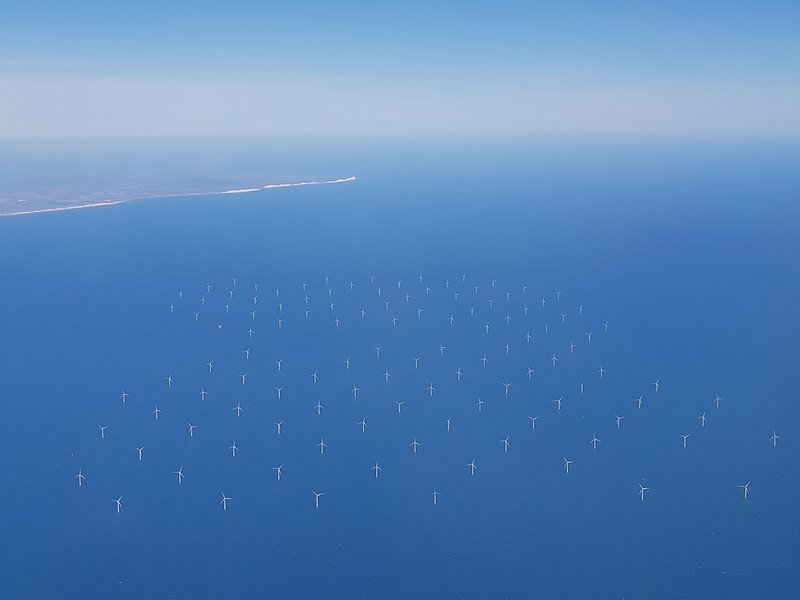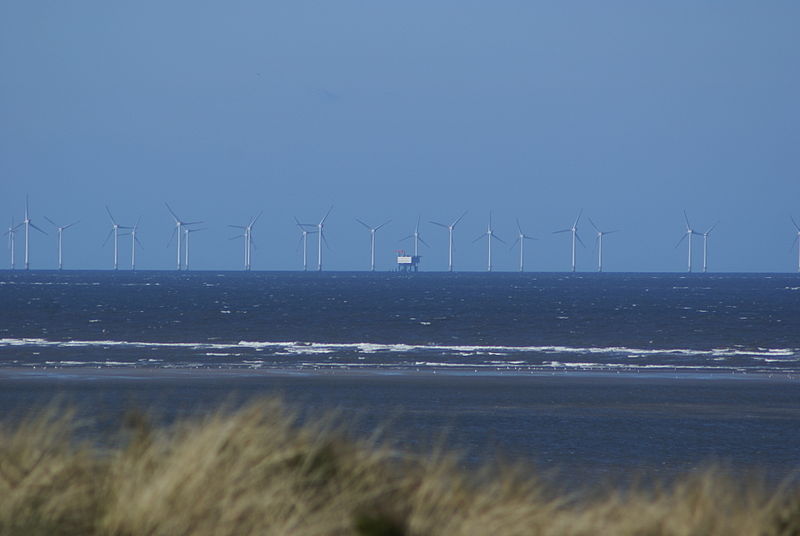Europe dominated the offshore wind market in 2018 with a total operating capacity of 18.8GW. Asia is the only other significant contributor to the world’s offshore wind energy production, with a capacity of 4.8GW

Windpark Baltic 1 (Credit: Martin Doppelbauer/Wikipedia)
By the end of 2018, the overall operating offshore wind power capacity in the world stood at 23.7 gigawatts (GW), according to a report released by the International Renewable Energy Agency (IRENA).
Europe’s offshore wind capacity comes from 4,543 wind turbines built across 11 countries. The region saw the commissioning of 409 new offshore turbines over 18 projects, adding 2.65GW of net capacity in 2018, according to WindEurope. This marked an increase of 18% in new offshore generation compared with the previous year.
A total of €10.3bn investment was secured by the European offshore wind industry in 2018, as 12 new offshore wind projects with a combined capacity of 4.2GW reached final investment decision (FID).
NS Energy profiles the top offshore wind power-producing countries in Europe.
1. UK
With an installed offshore wind capacity of 8.3GW in 2018, the UK is the top offshore wind power producing country in Europe. The country also has the third biggest onshore wind capacity in the region, after Germany and Spain.
The UK had 1,931 offshore wind turbines in full operation on its seabed at the end of 2018, according to the offshore wind operational report published by The Crown Estate. Overall, the country increased its total count of operational wind farms to 38 last year, producing a total of 26.6TWh in 2018 to meet the power consumption needs of 6.9 million homes.
Offshore wind, which made up 7.7% of the UK’s total estimated power generation in 2018, could offset the country’s CO2 emissions by 12 million tonnes.
The year also saw the full commissioning of the 657 megawatts (MW) Walney 3 Extension in the Irish Sea, making it the largest operational offshore wind farm in the world at the time.
The UK is also home to other major offshore wind projects, including the 630MW London Array offshore wind farm, the 576MW Gwynt y Môr offshore wind farm, and the 573MW Race Bank offshore wind farm.

2. Germany
Germany, with an operating offshore wind capacity of 6.4GW in 2018, stands at the second spot on the list. The country also ranks second in the top offshore wind producers in the world.
The country’s contribution to Europe’s operating offshore wind capacity in 2018 was 35%, which came from a total of 743 turbines. It added 969MW of new offshore wind capacity in 2018, coming from three new projects. Among these projects, is the 465MW Borkum Riffgrund II in the North Sea, which became the largest offshore wind farm in the country.
The other two offshore wind farms that were commissioned in German waters in 2018 were the 385MW Arkona Wind Park and the 350MW Wikinger offshore wind project, which were built in the Baltic Sea.
Germany’s offshore wind capacity is also driven by major offshore wind farms such as Gode Wind 1 & 2, Veja Mate, BARD Offshore 1, and Global Tech I. The most significant, in terms of capacity, are the 582MW Gode Wind 1 & 2 offshore wind farms that can cover the power consumption requirements of close to 600,000 households per year.
3. Denmark
Denmark is the third-largest offshore wind power producing country in Europe. Its total offshore capacity reached 1.3GW in 2018, an increase from 1.29GW in the previous year.
Some of the offshore wind projects that contribute to the production of renewable power in the country include the 407MW Horns Rev 3 located in the eastern North Sea, and the 400MW Anholt Offshore Wind.
The country’s other major offshore wind farms include the 207MW Rødsand II project, which is an extension of the 166MW Rødsand I Wind Farm that was commissioned in 2004, and the 160MW Horns Rev (Horns Reef) offshore wind farm.
Denmark is also constructing the 604MW Kriegers Flak offshore wind project in the Baltic Sea, approximately 15km off the country’s coast.
The €1.3bn ($1.47bn) project is scheduled for commissioning in 2021. It will have capacity to generate clean electricity required to power 600,000 homes over its estimated lifespan of 25 years.

4. Belgium
With an installed capacity of 1.17GW, Belgium has the fourth-biggest offshore wind power generation capacity in Europe.
Some of the major offshore wind farms in the country include the 216MW Northwind project located in the North Sea, about 38km off the coast, the 165MW Nobelwind project, and the 294MW Rentel offshore wind farm.
Major upcoming offshore wind projects in the country include the 370MW Norther project planned approximately 23km off the Belgian coast, the 219MW Northwester 2 in the North Sea, off the coast of Ostend, and the 487MW SeaMade offshore wind farm in the Belgian Exclusive Economic Zone (EEZ) of the North Sea.
The SeaMade project, which will integrate two wind sites known as Mermaid and Seastar, is the single largest windfarm being funded and built in Belgium. Estimated to cost €1.3bn ($1.4bn), the project is scheduled for commissioning in 2020.
5. Netherlands
The Netherlands is the fifth-biggest producer of offshore wind energy, with an installed capacity of 957MW in 2018.
The 600MW Gemini offshore wind farm located in the Dutch waters of the North Sea is one of the biggest operational renewable projects in the country.
Owned by Northland Power (60%), Siemens (20%), HCV (10%) and Van Oord (10%), the project was built with an investment of €2.8bn ($3.1bn).
Some of the other projects operational in the country include 129MW Eneco Luchterduinen located 23km off the coast between Zandvoort and Noordwijk cities, and 120MW Princess Amalia wind farm located on the Dutch Continental Shelf at block Q7.
Developed by a 50/50 joint venture between the Dutch energy company Eneco and Japan’s Mitsubishi, the Eneco Luchterduinen wind farm has turbines capable of generating clean electricity for nearly 150,000 houses.
Commissioned in June 2008, the Princess Amalia project is one of the world’s deepest offshore wind farm, constructed at a depth of 19-24m. It was developed by Econcern.
